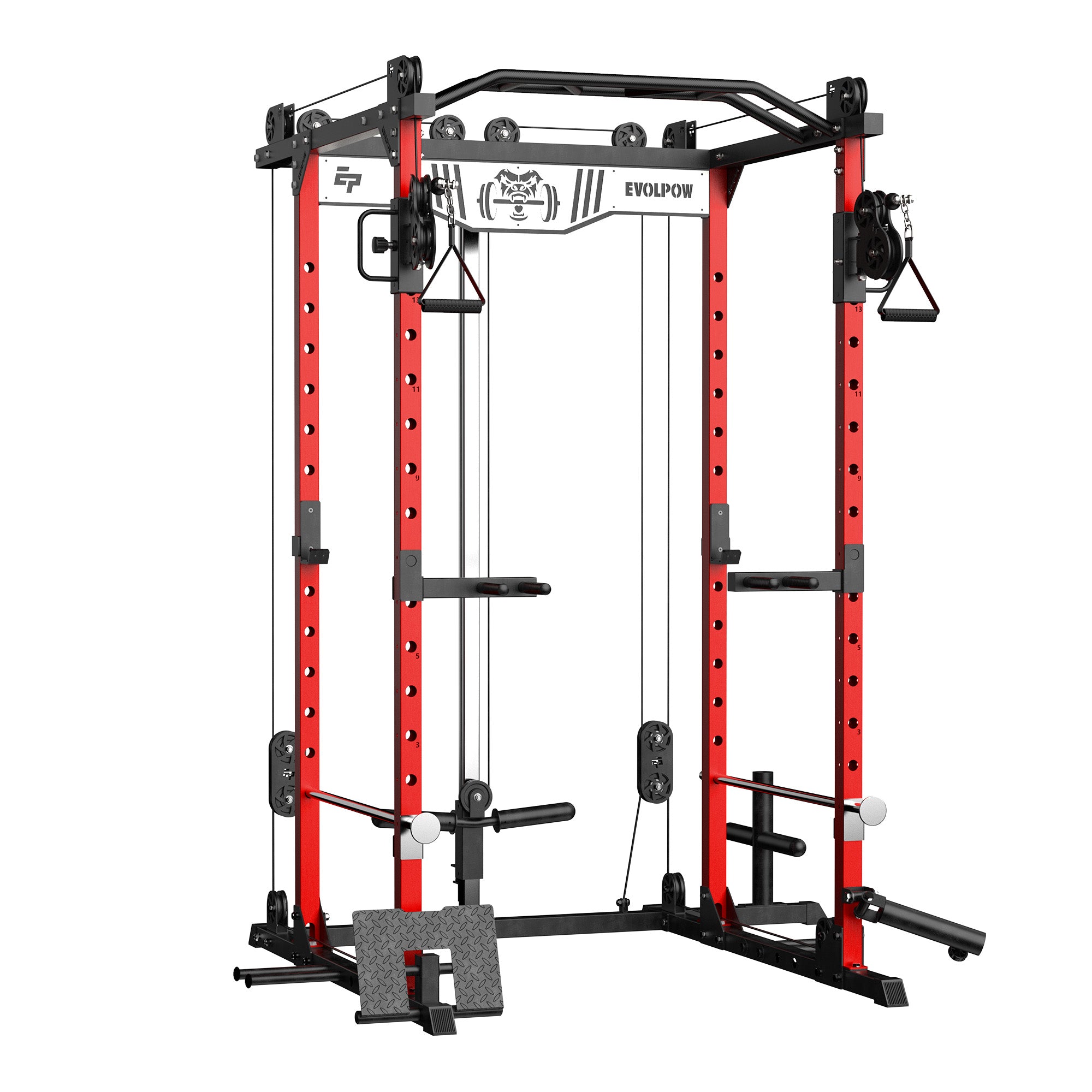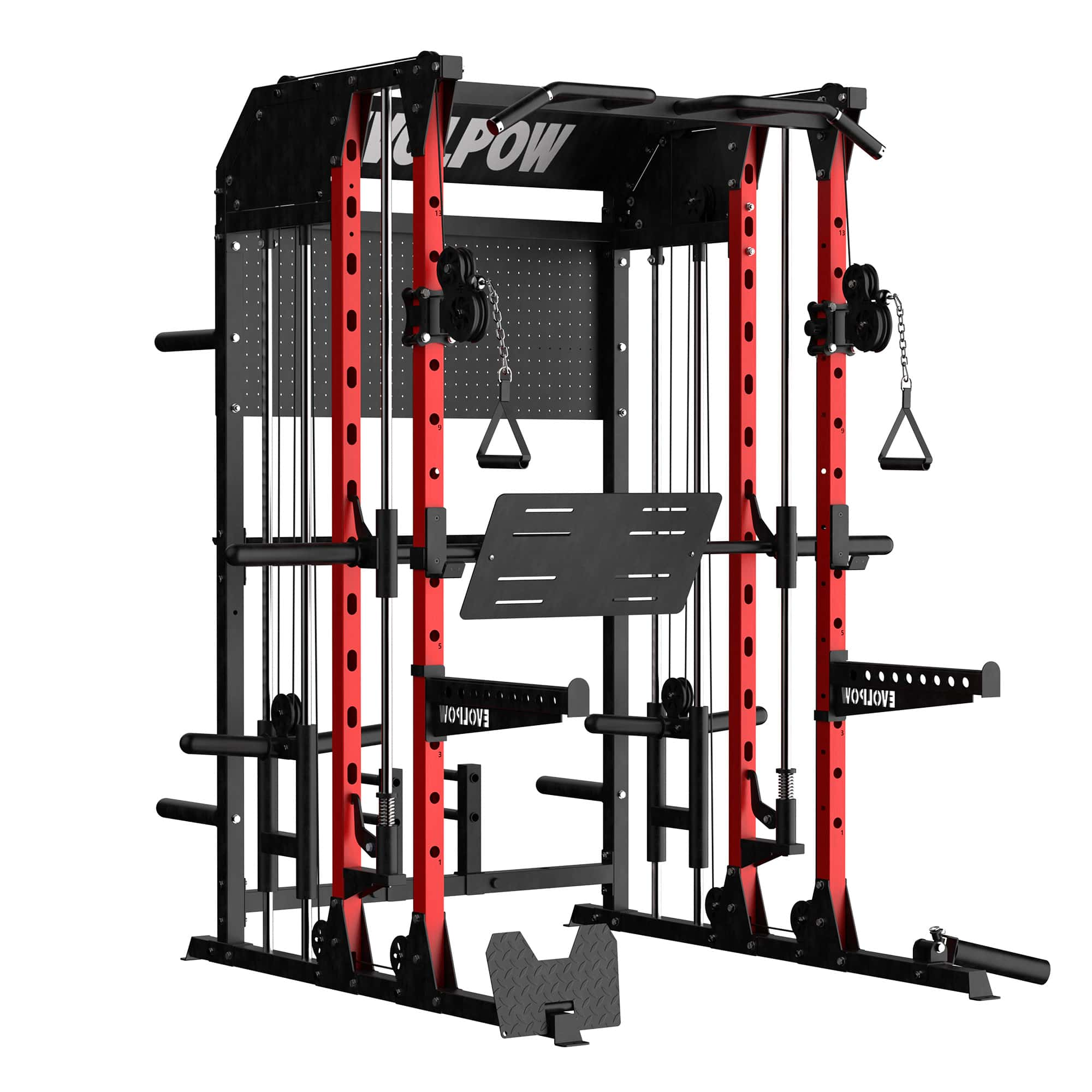When planning a gym training program or setting up a home fitness space, choosing the right home gym equipment is often the first step towards efficient training. When faced with a wide variety of strength training equipment, squat racks and power racks often become a "choice dilemma" for beginners and advanced trainers due to their similar functions but different focuses.
This article will deeply analyze the differences between the two from three core dimensions: safety, versatility, and space. By combining training goals, venue conditions, and budget considerations, it will help you accurately determine which equipment better matches your fitness blueprint in your home gym- whether it is for efficient and safe solo training or for dynamic needs that require flexible adaptation to different training stages. The answers are all in the detailed comparisons.
CONTENTS
What is a Power Rack?
What is a Squat Racks
Safety Compared
Versatility Compared
Space Compared
What is a Power Rack?

A power rack is a sturdy, enclosed structure that provides a safe and versatile platform for weightlifting exercises. Typically, power racks are equipped with adjustable safety bars or pins, which catch the barbell if the lifter fails to complete a rep, making them ideal for exercises that involve heavy weights, like squats, deadlifts, and bench presses.
Key features of a power rack include:
-
Enclosed design: The four upright posts and crossbars allow you to perform lifts safely, with no risk of the barbell falling out of the rack.
-
Safety bars or pins: These can be adjusted to a suitable height to catch the barbell in case of failure.
-
Versatility: Power racks support a wide variety of exercises, from squats to pull-ups, bench presses, and even overhead presses.
-
Added accessories: Most power racks come with additional features such as pull-up bars, weight storage, and even dip bars.
Power racks are especially suited for lifters who want to train with heavy weights, perform more complex lifts, or train alone without the need for a spotter.
What is a Squat Rack?

A squat rack, on the other hand, is a more minimalist piece of equipment designed primarily for squats and other lower-body exercises. Squat racks typically consist of two vertical posts connected by a crossbar at the top, with adjustable J - hooks or shelves for holding a barbell.
Safety Compared
Power Rack: The most notable advantage of a power rack over a squat rack is safety. The built-in safety bars act as a catch if you fail to complete a lift, preventing the barbell from crashing down on you. This feature makes power racks ideal for lifters training alone or attempting heavy lifts. The adjustable safety bars provide customizable heights to accommodate different exercises, ensuring you're always protected, whether you're squatting, bench pressing, or performing other movements.
Moreover, power racks often include reinforced frames and extra support features, which offer additional safety when using heavy weights. The full enclosure provided by the rack is beneficial for protecting the lifter from the risk of dropping weights in any direction.
Squat Rack: While squat racks also offer some safety features, they are generally more limited compared to power racks. Some models come with spotter arms or safety straps, but these are often not as robust as the safety mechanisms found in power racks. The open structure of squat racks means that there is less protection against accidental drops or failed lifts. However, for basic exercises like squats and presses, squat racks can still provide a safe training environment, especially when used with proper form and caution.
Versatility Compared
Power Rack: The versatility of a power rack is unmatched. With its four-post structure and adjustable components, it can accommodate a wide range of exercises targeting different muscle groups. In addition to the standard compound movements, power racks can be equipped with various accessories to expand your workout options. For example, you can add a pull-up bar for upper body exercises, dip bars for triceps dips, or even resistance bands for added intensity. This makes the power rack a comprehensive piece of equipment that can grow with your fitness goals.
Squat Rack: Squat racks, on the other hand, are more specialized. While they can handle squats, bench presses, and overhead presses, the range of exercises is generally more limited compared to power racks. The open design of squat racks makes it easier to transition between exercises, especially for movements like Olympic lifts or CrossFit workouts that require quick transitions. However, the lack of additional safety features and limited space for accessories means that squat racks are best suited for those with a more specific training focus.
Space Compared

Power Rack: A power rack takes up significantly more space than a squat rack due to its large, enclosed structure. If you have a dedicated space or a spacious gym, the extra square footage will not be an issue. However, for home gym owners with limited space, the large size of a power rack can be a drawback. You’ll need a clear area with ample height and width to accommodate the rack and any additional attachments or movements you plan to perform.
Squat Rack: If space is a concern, the squat rack might be the better option. Since it is typically smaller and more compact, it can fit in tight spaces and is easier to move around. If your gym space is limited, a squat rack will provide the functionality you need without overwhelming the area. Many squat racks are also designed to be more portable, making them ideal for home gyms that need flexibility.
In Conclusion: Which Should You Choose?
Choosing between a power rack and a squat rack ultimately depends on your specific needs and circumstances. If you prioritize versatility, safety, and long-term adaptability, a power rack is the superior choice. It offers a comprehensive range of exercises and robust safety features, making it an excellent investment for serious lifters and those with ample space.
On the other hand, if you have limited space or a tighter budget, a squat rack can be a practical and effective alternative. It provides a focused range of exercises and is more affordable and space-efficient. Consider your fitness goals, available space, and budget when making your decision.
FAQ
Q: Are power racks expensive?
A: While power racks are often associated with higher costs due to their robust design and versatile features, EP offers budget-friendly options like the P2A and P3B that start at just $299. These models provide the stability and functionality of a traditional power rack without the premium price tag, making them an excellent choice for those seeking affordability without compromising on safety or workout variety.
Q: Can I upgrade a squat rack to a power rack?
A: In some cases, you can upgrade a squat rack to a power rack by adding additional posts and accessories. However, this depends on the specific model and manufacturer.
Q: How much space do I need for a power rack?
A: A power rack typically requires a footprint of around 90 inches in height, 40 to 50 inches in width, and 24 to 50 inches in depth. Ensure you have sufficient clearance around the rack for safe movement and accessory attachment.
REFERENCE
https://blog.warmbody-coldmind.com/guides/power-rack-vs-squat-rack/
https://www.garagegymreviews.com/squat-stand-vs-power-rack
https://blog.dynamofitness.com.au/power-rack-vs-squat-rack-the-difference






